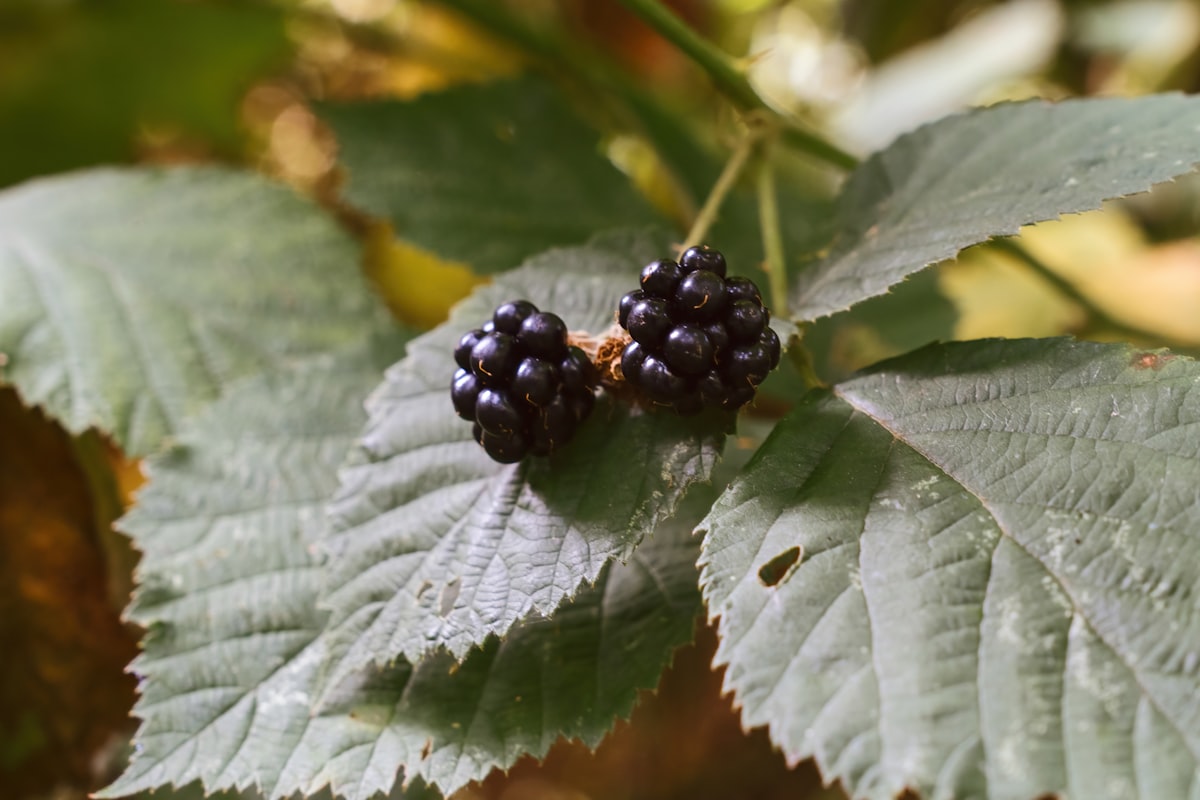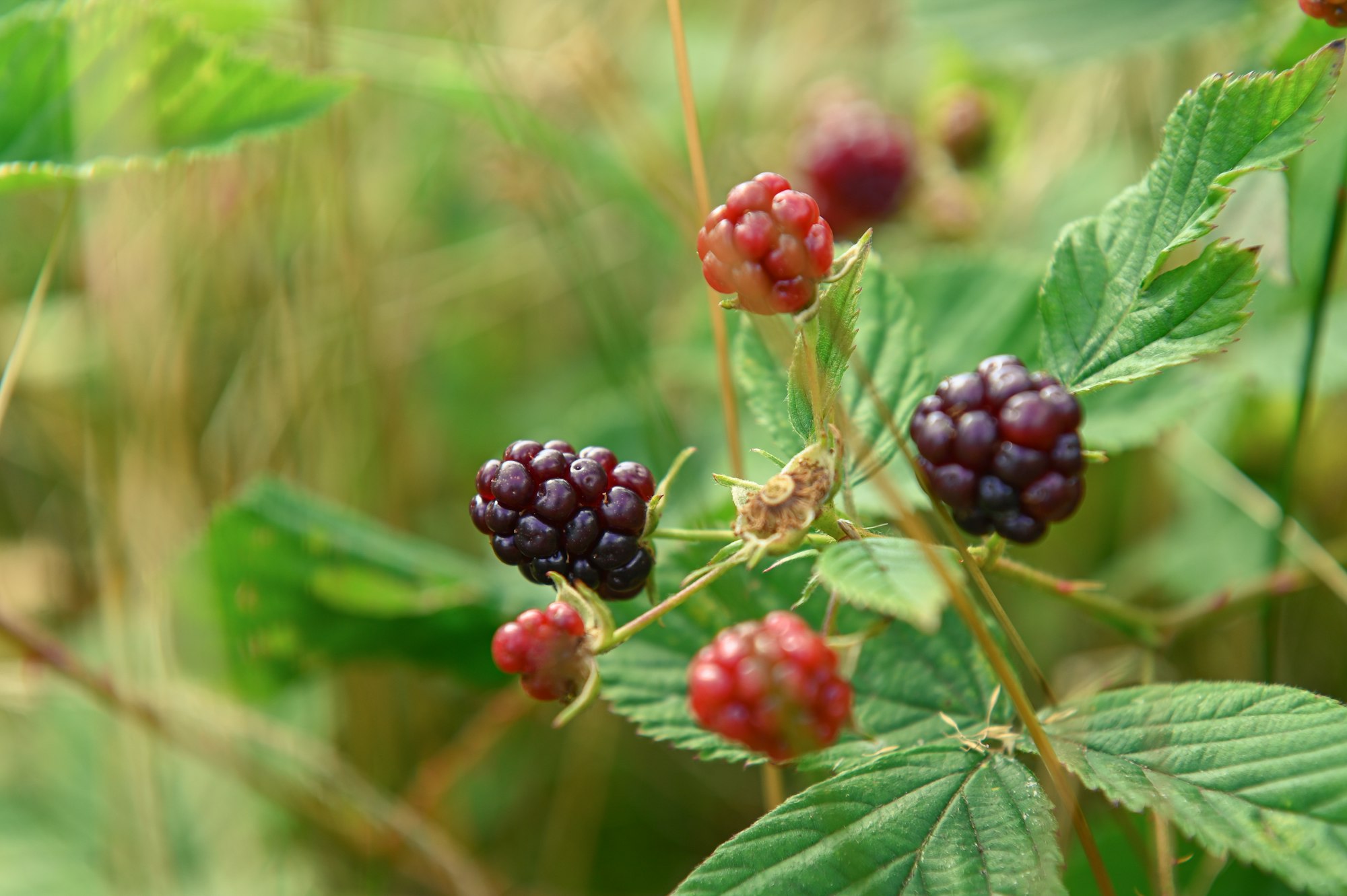How to Grow Blackberries
Growing blackberries can be a rewarding experience for any gardening enthusiast as these juicy, sweet berries are delicious and packed with numerous health benefits.

Table of Contents
You can successfully cultivate a thriving blackberry bush in your garden by following a few simple steps and providing the right conditions.
Selecting the appropriate blackberry variety for your region is crucial, as different types are suited to varying climates.
Once you've chosen a variety, prepare your planting area with well-draining, slightly acidic soil in a full sun location. Space your plants 5 to 6 feet apart, and if planting in rows, set the rows 5 to 8 feet apart.
With proper care, you'll soon be enjoying an abundant harvest of fresh blackberries right from your backyard.
About Blackberry Plant
Blackberries are members of the Rosaceae family, like raspberries, roses, and apple trees. These berries are native to North America, South America, Europe, and Asia, and they grow well in well-drained, fertile soil with a slightly acidic pH of 5.5-6.5.
There are four types of blackberries: erect, thorny, thornless, and trailing.
Your choice depends on your preference, with erect thorny varieties resembling their wild cousins and thornless and trailing varieties offering a more manageable growth habit.
To ensure a productive harvest, plant your blackberries in sites with full sun and provide a trellis or support for trailing varieties.
Growing Blackberry
To plant blackberries in your yard, choose a well-draining sandy loam with a pH of 5.5-6.5 and a full sun location with six to eight hours of direct sunlight.
Amend the soil with organic matter before planting in the summer or fall to ensure optimal growth conditions.
In early spring, space the plants about 4 to 5 feet apart within rows and 8 to 10 feet between rows.
Install a support system like a trellis or sturdy post for the blackberries to grow on, as this will help in easy maintenance and harvest.

Caring For Blackberry Plant
Sun and Temperature
Blackberries thrive in full sun and can tolerate a range of climates, but they do best in hardiness zones 5-9. Ensure your blackberry plants receive at least six hours of sunlight daily for optimal growth.
Water and Humidity
Water the plants consistently, especially during their first year, and aim for about 1 inch of water per week. Be mindful of the delicate balance between adequate moisture and over-watering, which can lead to root rot or other diseases.
Soil and Fertilizing
Blackberries prefer well-draining, slightly acidic soil (pH 5.5-6.5) rich in organic matter. Before planting, mix compost or well-rotted manure into the soil and apply mulch to help with moisture retention.
Fertilize the plants in early spring using a balanced fertilizer according to package instructions.
Pruning and Propagation
Prune blackberries in late fall or early spring to remove damaged or dead canes.
To propagate, transplant new canes or suckers emerging from the base of the plant.
Remember that blackberries have two types of canes: primocanes, which grow and establish in the first year, and floricanes, which bear fruit in the second year before dying off.
Troubleshooting Plant Problems
Growing Problems
If your blackberry plants are not producing fruit or the fruit is misshapen, it may be due to an infection from viruses such as Blackberry Calico, Raspberry Bushy Dwarf, or other common viruses.
Ensure you have chosen a variety suited to your growing zone, such as Chester, Natchez, Arapaho, Himalaya, or Navaho, which can thrive in zones 5-9.
In the spring, carefully inspect your blackberry plant's stem and remove any dead or diseased parts while keeping the plant dormant.
This aids in promoting a healthier, more productive growing season.
To achieve larger fruit sizes, trellis your plants using wires, which will support and encourage an upright growth habit.
Pests and Diseases
Keep an eye out for aphids, which could cause damage to your blackberries.
If your plants have a pest problem, consider spraying them with neem oil and avoiding inorganic pesticides that may kill useful pollinators.
Regular monitoring and getting rid of pests early will help maintain your blackberries' health.
Among the diseases that may affect blackberry plants are fungal and bacterial infections.
Be vigilant for symptoms such as discolored leaves or poor fruit development, and take prompt action to treat the issue.
By understanding the potential challenges, you can take proactive steps to ensure a successful blackberry growing experience.
Conclusion
Growing blackberries can be rewarding, providing you with an abundance of delicious fruit. Choose a suitable blackberry variety for your climate and plant in well-drained soil, preferably in full sun.
Be sure to provide a trellis for support if growing semi-erect or trailing blackberries, and keep the area well-mulched to conserve water.
You'll be enjoying a fruitful harvest with proper care and attention in no time.
Frequently Asked Questions
What are the ideal conditions for growing blackberries?
Blackberries thrive in well-draining soil with a pH of 5.5-6.5. They need at least 6-8 hours of direct sunlight daily for maximum productivity.
How do I plant and care for blackberry shrubs?
Plant blackberries 3-4 feet apart in rows, with a shallow depth of about 1 inch. Provide 1 inch of water per week, especially during growing and ripening. Fertilize with an all-purpose fertilizer in early spring.
What are the best companion plants for blackberries?
Companion plants that thrive with blackberries include marigolds, nasturtiums, and yarrow. These plants help deter pests and improve overall plant health.
How can I grow blackberries on a trellis or fence?
Secure the canes to a trellis or fence for trailing or semi-erect blackberry varieties. Install a wire trellis system when planting for easier growth management.
What types of trellises are suitable for blackberry plants?
Suitable trellises for blackberries include wood or wire trellises. For improved support, choose a sturdy, lasting material that can withstand the weight of the fruit-laden canes.
How long does it take for blackberries to produce fruit?
Blackberries typically begin producing fruit in their second year. Once established, they can continue producing fruit for 5-10 years with proper care.


